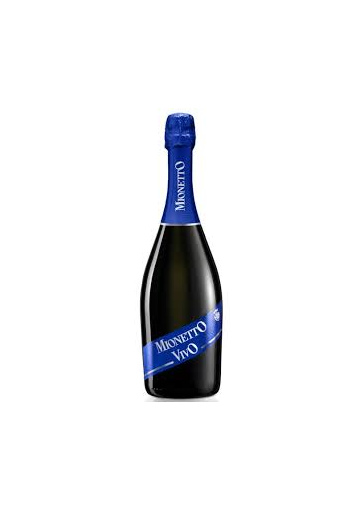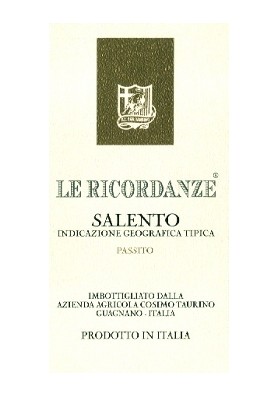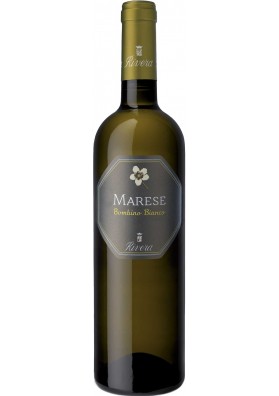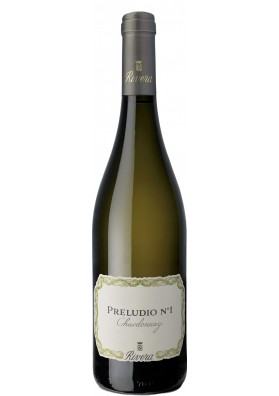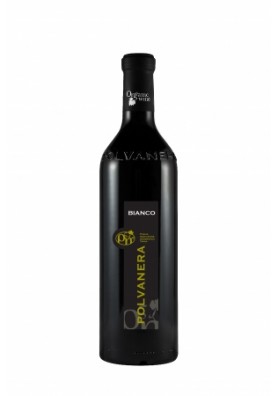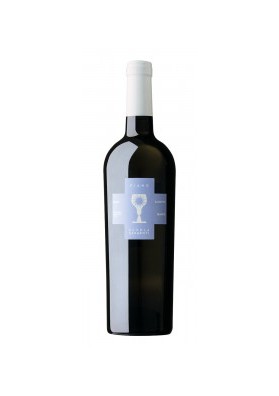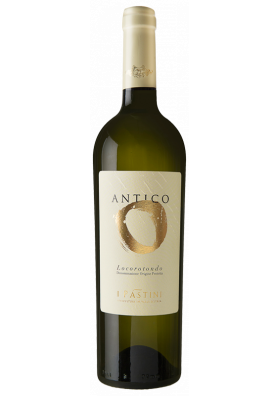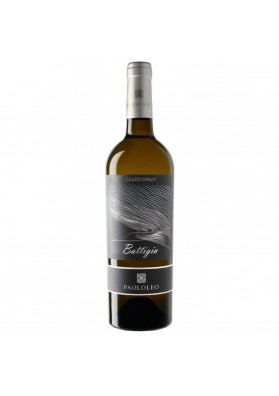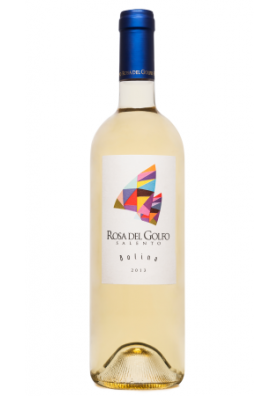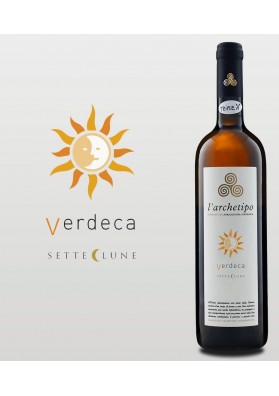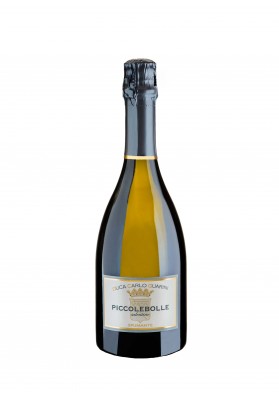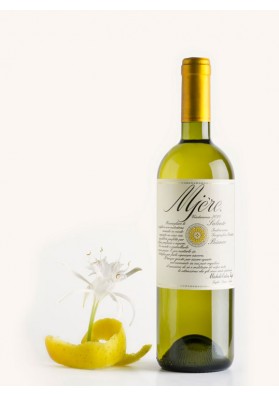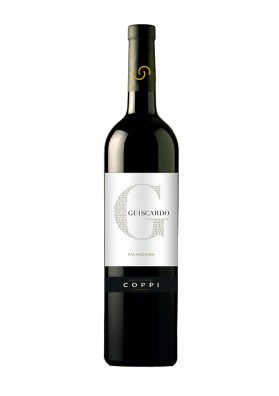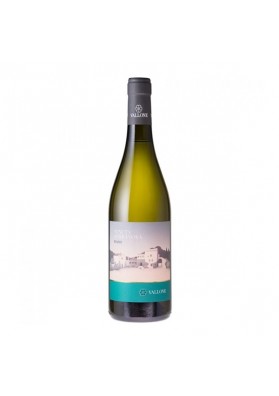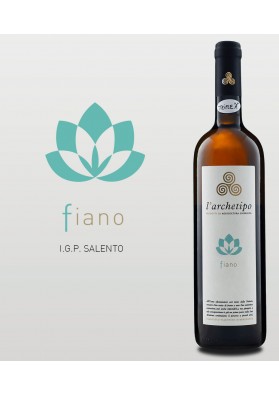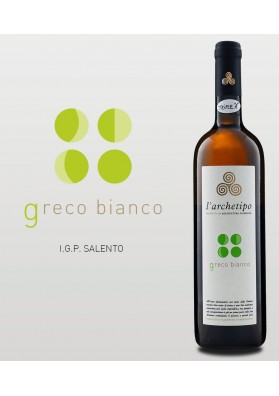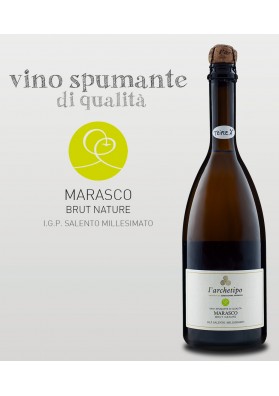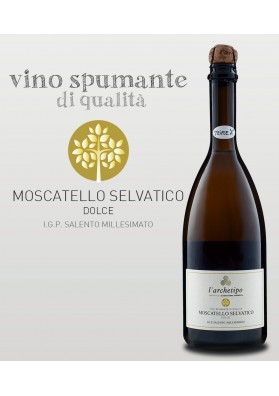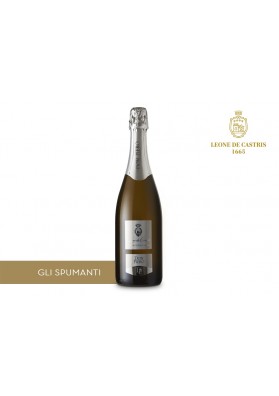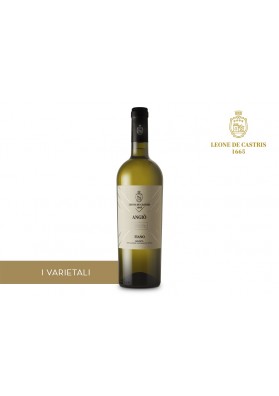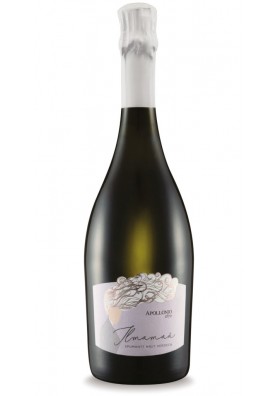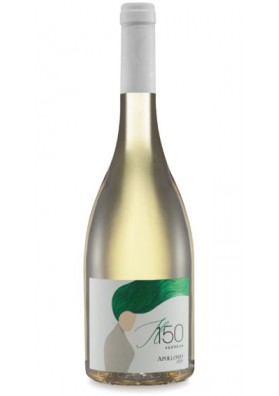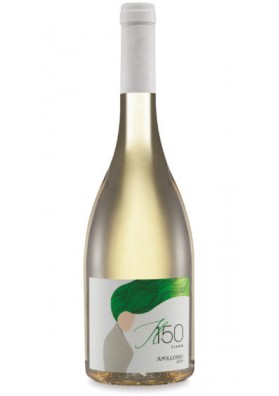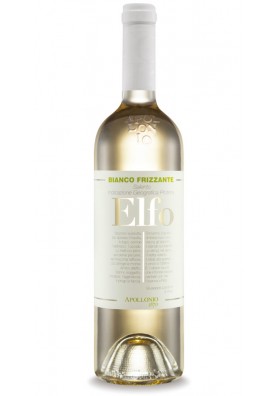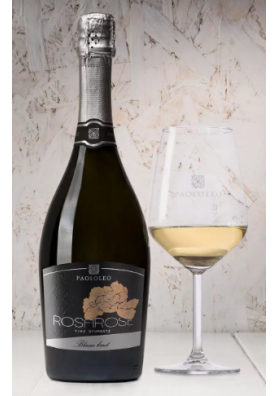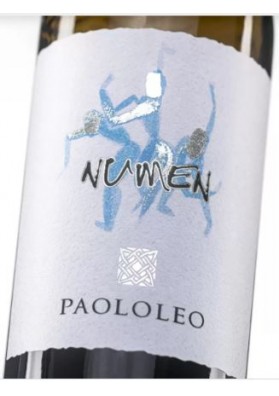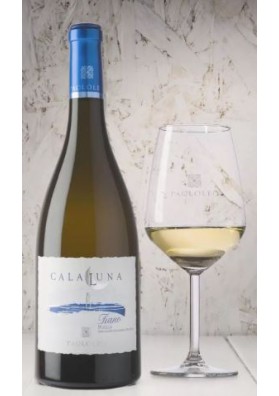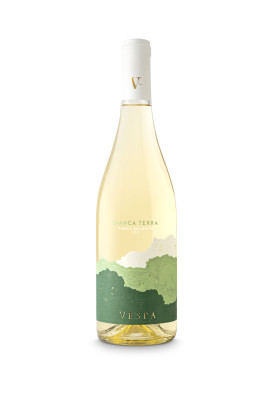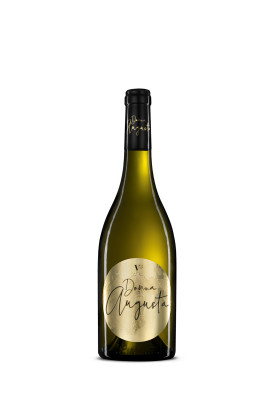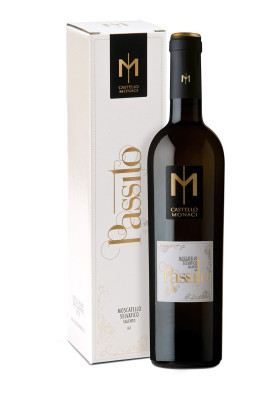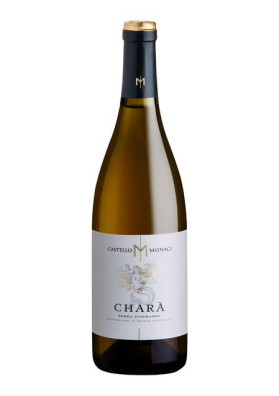Shopping Cart
- 0 item items (empty)Mionetto Vivo Extra Dry
Mionetto
Warning: Last items in stock!
Availability date:
Also might be interesting
Le Ricordanze Bianco Salento Passito IGP
Cosimo Taurino
2011
Made from the following types of grapes: Semillon e Riesling
Ideal dessert wine, from a complex and many intense bouquet thanks to the late harvest of the grapes that it determine a high sugar concentration.
Show more
Marese Castel del Monte DOC
Rivera
2017
Rivera sets the challenge of making a monovarietal Bombino Bianco which would capture all of those grape’s qualities, instead of blending it with other varieties, as it is customary. The ultra-ripeness of the harvested fruit, evident in the wine’s complex, rich fragrances, finds a lovely counterpoint in the crisp acidity typical of Bombino Bianco. Our Marese is a lively, refreshing wine to be enjoyed young, especially when partnered with “antipasti” and seafood dishes.
Show more
Preludio N°1 Castel del Monte DOC
Rivera
2017
The idea of bringing a typically “northern” vine, such as Chardonnay, into Apulia, represented a great wine making challenge for our winery. The transfer required long years of experimentation; first in the vineyard, researching the correct stock and the most appropriate training system, and then, once the vine was acclimatised, in the wine cellar, to identify the right time to harvest and the most suitable system of wine-making. The results were certainly positive, thanks to the fact that on the hills of the Castel del Monte doc area, especially on calcareous-tufaceous soils, the Chardonnay vine has found a habitat which fosters its complete, correct maturation, exalting the variety character. The wine that has resulted, the Preludio n°1, is one of the most prestigious in our range of production.
Show more
Minutolo
Polvanera
2018
Clear pale straw yellow colour with greenish reflex. Intense aromatic scents of bergamot ,banana, peach, camomile and mayflower with a musky finish. Mouth delicately aromatic and with good texture, enlivened from a tasty flowing sapid-freshness; persistent aftertaste.
Show more
Fiano I.G.T Salento White
Schola Sarmenti
2019
Harvesting and wine-making:Grapes are picked up by hand and gently laid down into little airy crates, arriving as whole bunches at the winery. Once there, grapes are further selected using an advanced sorting table.
Bouquet: Noble grapes with an unmistakable delicate scent of Acacia flowers and an ever-present aroma of toasted nuts.
Show more
Antico Locorotondo DOP Bianco
I Pastini
2019
Born from a blend of the three autochthonous grapes: 60% verdeca, 35% White On Alessano, 5% Minutolo Antico is a white wine with a PDO (Protected Designation of Origin) typical of Valle d'Itria product since past by farmers in the place to try to exploit the resources of the territory. As the name already suggests, the Old is vinified according to the tradition of the old farmers and wine producers in the Itria Valley, with a traditional farming system sapling, the grapes of the three local wines are combined in predetermined quantity since the plant then harvested, de-stemmed and vinified together with the most modern winemaking techniques.
Show more
BATTIGIA Chardonnay Salento IGP
Paolo Leo
2022
Chardonnay is the most famous white grape variety in the world, able to express in a particular way the different territories where it is grown. In Salento, Chardonnay is known for its delicate tropical fruit aroma sand structured body, with the proper freshness needed to perfectly pair Apulian foods
Show more
Bolina Verdeca del Salento IGT
Rosa del Golfo
2019
Colour straw yellow with green reflections
Bouquet fresh, delicate, pleasantly fruity
Palate balanced, delicate, elegant
Serving 10° C, pull the cork when serving
Accompaniments sea-food, shell-fish, boiled fish with delicate sauces
Show more
Sette Lune Verdeca IGP Salento
l'Archetipo
2017
Ageing of wine on lees: 2 years in steel tanks, shaking it every 15 days. Very low amount of sulphur dioxide added before bottling.
Organoleptic properties: golden yellow colour; fine and intense fru-ity, floral and grassy nose, with spicy and mineral finish. Medium body, balanced, scarcely tannic, soft taste and very long freshness.
Food pairing: ideal with all dishes that need a structured wine with a good freshness; very good with fishes and white meat.
Serving temperature: 10-12°C.
Show more
Piccolebolle Salentine Spumante IGT Extra Dry...
Vini Duca Carlo Guarini
Color: Straw yellow, with a fine and persistent perlage.
Smell: Particular aroma with citrus hints.
Taste: The taste is refined, harmonious with a pleasant persistence. It has a beautiful body, which remains in the mouth for a long time.
Pairings: It goes well with seafood, oysters, appetizers and fish-based first courses, shellfish and seafood salads, goat and sheep cheeses.
Show more
Mjere Salento Bianco IGP
Michele Calò
2023
Grape harvest, appropriately anticipated, gives to the product a good total acidity and so a relevant endurance in time. With a meticolous selection of grapes which are pressed softly just the free-run must or "mosto fiore", about the 30%, is used for the final product.
GASTRONOMIC PAIRING: it combines well with shellfishes and seafood-cooking, with tasty mediterranean first courses.
Show more
GUISCARDO Vino Falanghina IGP Puglia
Vini Coppi
2018
Falanghina wine Apulia I.G.P. It is a lively young wine, exuberant in the glass, charms with its persistence and freshness, pleasantly acidulous, in harmony with the clarity of the fruit. Roberto Guiscardo was the great Norman leader of the Apulian lands and brother of the feudal lord of the castle of Gioia del Colle. Food pairings: spaghetti pasta with mussels, calamari and pistachio pesto, swordfish carpaccio with green and pink peppercorns, tuna tataki with finely diced cucumbers, aubergine polpetti
Show more
Tenuta Serranova Fiano IGP Salento
Agricole Vallone
2023
Color: straw yellow with strong greenish reflections, bright, brilliant.
Smell: intense and persistent, complex; the hints that emerge reminiscent of white flowers, tropical fruits, pear, apricot, as well as delicious citrus and balsamic notes.
Taste: harmonious, fresh, sapid, well structured, with excellent aromatic persistence
Food matches: It can be served as an aperitif and to accompany first courses based on fish, crustaceans, molluscs, octopus, white meats and aged cheeses
Show more
Fiano IGP Salento
l'Archetipo
2016
Winemaking: after destemming and soft crushing grapes, must fer-ments spontaneously with grapes skins thanks to a pied de cuve of native yeasts, the only ones which increase the expression of our Terroir. After 6-7 days of maceration with the skins, must is soft pressed in order to separate it from grape skins. The alcoholic fer-mentation continues for 2 months at low temperature (13-14 °C). Natural fining and stabilization, no fining agents added.No filtration.
Ageing of wine on lees: 5-6 months in steel tanks, shaking it every 15 days. Very low amount of sulphur dioxide added before bottling.
Organoleptic properties: straw yellow colour with greenish yellow reflex; fine floral, fruity and grassy nose. Medium body, soft and very fresh.
Food pairing: ideal with fishes, shrimps and shellfishes; try it with vegetables risotto.
Serving temperature: 8-10°C.
Show more
Marasco Spumante Brut Nature Millesimato
l'Archetipo
2016
Winemaking (Ancestral method): after destemming and soft crushing grapes, must ferments spontaneously, thanks to a pied de cuve of na-tive yeasts, the only ones which increase the expression of our Ter-roir. After 40 days of alcoholic fermentation at low temperature (13-14°C), before total sugars depletion, fermenting must is transferred in stainless steel pressure tank (11-12°C), where the residual sugar is converted into alcohol and carbon dioxide. Wine is aging on lees, with continue battonage in these pressure tanks, in order to obtain a stable wine. Very low amount of sulphur dioxide added before bott-ling. Natural fining and stabilization, no fining agents added.No filtration.
Residual sugars per litre: 2,5 g/l, Brut Nature (no sugar added).
Organoleptic properties: greenish yellow colour, fine and quite persi-stent bubbles; intense fruity (peach, apple and pear) and floral nose. Soft taste, tasty and very fresh.
Food pairing: ideal aperitif but also for lunch and dinner, very good with fish starters and main courses.
Serving temperature: 4-6 °C.
Show more
Moscatello Selvatico Spumante Dolce IGP Salento...
l'Archetipo
2016
Winemaking (Ancestral method): after destemming and soft cru-shing grapes, must ferments spontaneously thanks to a pied de cuve of natural yeasts, the only ones which increase the expression of our Terroir. The presence of very low amount of red grapes, gives wine anthocyanins and so colour. After 40 days of alcoholic fermen-tation at low temperature (13-14°C), before total sugars depletion, fermenting must is transferred in stainless steel pressure tank (11-12°C); when the residual sugar reaches 50 g per litre, temperatu-re is decrease (<10°C) to stop fermentation. Wine is aging on lees with continue bâttonage in these pressure tanks, in order to obtain a stable wine. Very low amount of sulphur dioxide added before bottling. Natural fining and stabilization, no fining agents added. No filtration.
Residual sugars per litre: 50 g/l, sweet.
Organoleptic properties: light amber colour, fine and quite persi-stent bobbles; fruity and floral nose. Balanced and very soft taste, very fresh and sweet.
Food pairing: ideal for desserts and cakes, very good with Indian and Japanese foods.
Serving temperature: 6-8 °C.
Show more
Don Piero Brut Malvasia Bianca
Vini Leone De Castris
Straw yellow with greenish highlights and a fine and persistent perlage. The nose has an intense bouquet with dried fruit hints and fragrances of white flowers. In the mouth it has a great balance between freshness and smoothness. Very good with aperitif and sea-food appetizers.
ALCOHOL: 11,5%
SERVING TEMPERATURE: 6-8°C
Show more
Angiò Fiano IGT Salento
Vini Leone De Castris
2019
Pure Fiano of pale yellow color. To the nose peach and pi-neapple aromas, accompanied by intense floral notes . In the mouth it is soft and pleasantly cool, rich in structure. Excel-lent with pasta dishes and succulent seafood, grilled fish and lean meats.
Show more
Il Mamaà Spumante Brut Verdeca Salento I.G.P...
Apollonio
TERRITORY
The Salento region is identified by three climatic elements: the sun, the architect that creates generous degrees of sugar, the sea, responsible for the minerality of the wines, and the wind that makes this area naturally free of disease and particularly suitable for the production of "natural" wines. Characterized by extensive flat areas and modest hilly reliefs, the Salento region is geologically constituted
by a calcareous structure of medium texture.
VARIETY INFORMATION
Verdeca is a white grape variety native to Puglia, its greenish shade is suggested in its name. An elegant variety with great vigour.
PAIRING RECOMMENDATIONS: Raw seafood, shellfish, fried fish and fresh cheeses.
SERVING TEMPERATURE: 6-8° C
Show more
IL 150 Verdeca Salento I.G.P. Bianco
Apollonio
2023
TERRITORY
The Salento region is identified by three climatic elements: the sun, the architect that creates generous degrees of sugar, the sea, responsible for the minerality of the wines, and the wind that makes this area
naturally free of disease and particularly suitable for the production of "natural" wines. Characterized by extensive flat areas and modest hilly reliefs, the Salento region is geologically constituted by a calcareous structure of medium texture.
VARIETY INFORMATION
Verdeca is a white grape variety native to Puglia, its greenish shade is suggested in its name. An elegant variety with great vigour.
COLOUR: Straw yellow with greenish reflections.
AROMAS: Fruity and floral with hints of green apple, white flowers and elderberry.
PALATE: Fruity and citrusy with elegant aromatic notes, there is a marked minerality and sapidity.
PAIRING RECOMMENDATIONS: Raw seafood, fried fish, vegetables and fresh cheeses.
SERVING TEMPERATURE: 10-12° C
Show more
IL 150 Fiano Salento I.G.P. Bianco
Apollonio
2023
TERRITORY
The Salento region is identified by three climatic elements: the sun, the architect that creates generous degrees of sugar, the sea, responsible for the minerality of the wines, and the wind that makes this area naturally free of disease and particularly suitable for the production of "natural" wines. Characterized by extensive flat areas and modest hilly reliefs, the Salento region is geologically constituted by a calcareous structure of medium texture.
VARIETY INFORMATION
Fiano, also known by the name Apiano, is an ancient southern vine whose cultivation dates back to Roman times. The name derives from the Latin word Apianus (bee) for the sweetness of its berries and as such, it is much appreciated by bees.
TASTING NOTES
COLOUR: Straw yellow.
AROMAS: Hints of white flowers, exotic fruit and honey.
PALATE: Fresh and mineral. Notes of yellow fruit, citrus and hazelnut. It has a refined and persistent finish.
PAIRING RECOMMENDATIONS: Appetizers that are based on fish, fresh cheese and white meats.
SERVING TEMPERATURE: 10-12° C
Show more
Elfo Frizzante Salento I.G.P. Bianco
Apollonio
TERRITORY
The Salento region is identified by three climatic elements: the sun, the architect that creates generous degrees of sugar, the sea, responsible for the minerality of the wines, and the wind that makes this area naturally free of disease and particularly suitable for the production of "natural" wines. Characterized by extensive flat areas and modest hilly reliefs, the Salento region is geologically constituted by a calcareous structure of medium texture.
VARIETY INFORMATION
Verdeca is a white grape variety native to Puglia, its greenish shade is suggested in its name. An elegant variety with great vigour The Bianco d'Alessano is an ancient white grape variety, originally from a small village in lower Salento from which it takes its name. It is appreciated for its adaptability to various types of terrain. "Late" in sprouting and ripening between September and October.
TASTING NOTES
COLOUR: Soft straw yellow.
AROMAS: Fruity and floral with hints of white fruit, green apple and lime.
PALATE: Fresh, mineral, with good acidity and flavour.
PAIRING RECOMMENDATIONS: Appetizers that include fish, fried fish and fresh cheese.
SERVING TEMPERATURE: 8-10° C
Show more
RosaRose Blanc Spumante Negroamaro Brut
Paolo Leo
Rosarose blanc is a sparkling wine, made from Negroamaro grapes processed with the tank method (charmat). Pleasant and fresh, with delicate aromas of fruit, is the perfect match of many traditional puglian dishes, specially seafood and local desserts.
FOOD PAIRING: fresh cheeses, vegetables, fish and seafood, creamy and delicate sauces; dry pastries and creamy desserts like cheesecake
Show more
NUMEN Chardonnay Salento IGP
Paolo Leo
2021
Chardonnay is a white grape variety that adapts very well to different terroirs and winemaking techniques. Fermenting and / or ageing Chardonnay wine in French oak barrels improves its complexity, structure and persistence, adding also notes of vanilla and other oak-derived spices. In addition, oak fermented/aged Chardonnay acquires longevity, developing fascinating tertiary aromas if kept properly in the bottle, even after a few years.
FOOD PAIRING: fish dishes, aged cheeses, pasta, white meat, grilled vegetables and aperitifs.
Show more
Calaluna Fiano Puglia IGP
Paolo Leo
2022
Of unknown origin, Fiano is one of the most prestigious white grape varieties of southern Italy. Its roots are ancient and glorious: in the Middle Ages, it was common to find Fiano wines on the tables of kings and emperors, who loved its freshness and fruity character.
FOOD PAIRING: fish, seafood, vegetable-based dishes, flow and soft cheeses.
Show more


